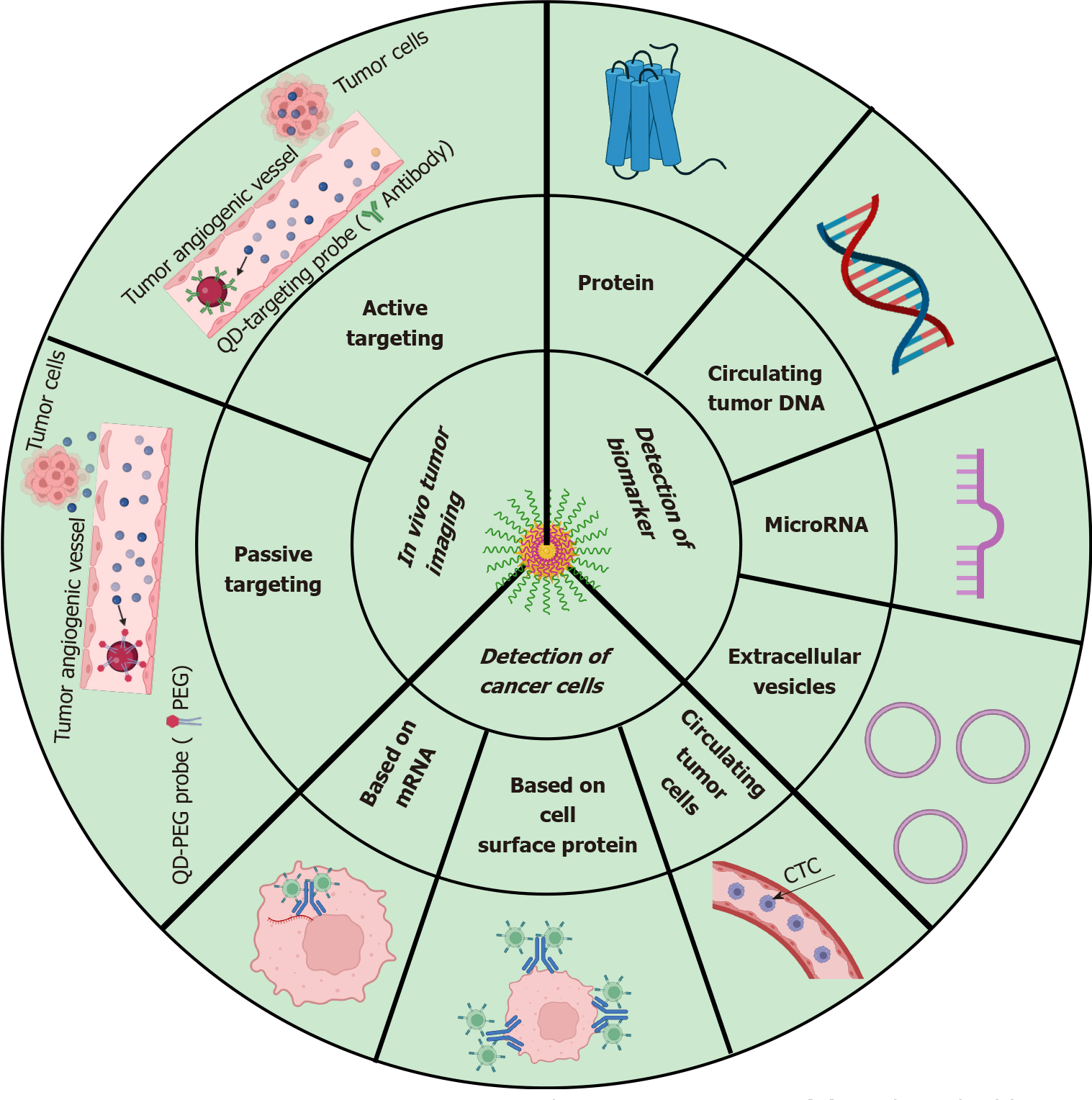Copyright
©The Author(s) 2022.
World J Gastroenterol. Dec 14, 2022; 28(46): 6497-6511
Published online Dec 14, 2022. doi: 10.3748/wjg.v28.i46.6497
Published online Dec 14, 2022. doi: 10.3748/wjg.v28.i46.6497
Figure 1 Schematic diagram representing the sequential steps in colon carcinogenesis.
APC: Adenomatous polyposis coli; DCC: Deleted in colon carcinoma; Ras: Rat sarcoma.
Figure 2 Advantages of nanoparticles in cancer drug delivery.
Nanoparticles along with extracellular vesicles or viruses improve the clinical efficacy of various therapeutic molecules (nucleic acids, antibodies, drugs, radionuclides) with efficient delivery of these molecules to the tumor with minimal off-targeting. Nanoparticles enhance the transport of these molecules by increasing their solubility, bioavailability and half-life in the bloodstream. The tumor delivery of therapeutic molecules is also enhanced by nanoparticles, leading to their accumulation and thus potentiating the use of various combination therapies for colorectal cancer. Citation: Briolay T, Petithomme T, Fouet M, Nguyen-Pham N, Blanquart C, Boisgerault N. Delivery of cancer therapies by synthetic and bio-inspired nanovectors. Mol Cancer 2021; 20: 55. Copyright© The Author(s) 2021. Published by Springer Nature. The authors have obtained the permission for figure using from the Springer Nature Publishing Group (Supplementary material).
Figure 3 Inorganic and organic nanoparticles for cancer detection and therapy.
The nanoparticles are divided into inorganic and organic nanoparticles. Inorganic nanoparticles, such as quantum dots, silica, carbon and metallic nanoparticles, are characterized by intrinsic electrical and optical properties suitable for cancer imaging, high stability and low biodegradability for theranostics. Organic nanoparticles, such as macromolecular assemblies or lipid-based nanoparticles, have lower stability but higher biocompatibility and multiple possibilities to add functional groups for drug delivery. Hybrid nanoparticles combine the qualities of both organic and inorganic nanoparticles to enhance their strength and biocompatibility. Citation: Briolay T, Petithomme T, Fouet M, Nguyen-Pham N, Blanquart C, Boisgerault N. Delivery of cancer therapies by synthetic and bio-inspired nanovectors. Mol Cancer 2021; 20: 55. Copyright© The Author(s) 2021. Published by Springer Nature. The authors have obtained the permission for figure using from the Springer Nature Publishing Group (Supplementary material).
Figure 4 Schematic diagram representing the nanotechnology-based applications in colon cancer diagnosis.
CTC: Circulating tumor cell; PEG: Polyethylene glycol; QD-PEG: Quantum dots-polyethylene glycol. Citation: Zhang Y, Li M, Gao X, Chen Y, Liu T. Nanotechnology in cancer diagnosis: progress, challenges and opportunities. J Hematol Oncol 2019; 12: 137. Copyright© The Author(s) 2019. Published by Springer Nature. The authors have obtained the permission for figure using from the Springer Nature Publishing Group (Supplementary material).
- Citation: Gogoi P, Kaur G, Singh NK. Nanotechnology for colorectal cancer detection and treatment. World J Gastroenterol 2022; 28(46): 6497-6511
- URL: https://www.wjgnet.com/1007-9327/full/v28/i46/6497.htm
- DOI: https://dx.doi.org/10.3748/wjg.v28.i46.6497












